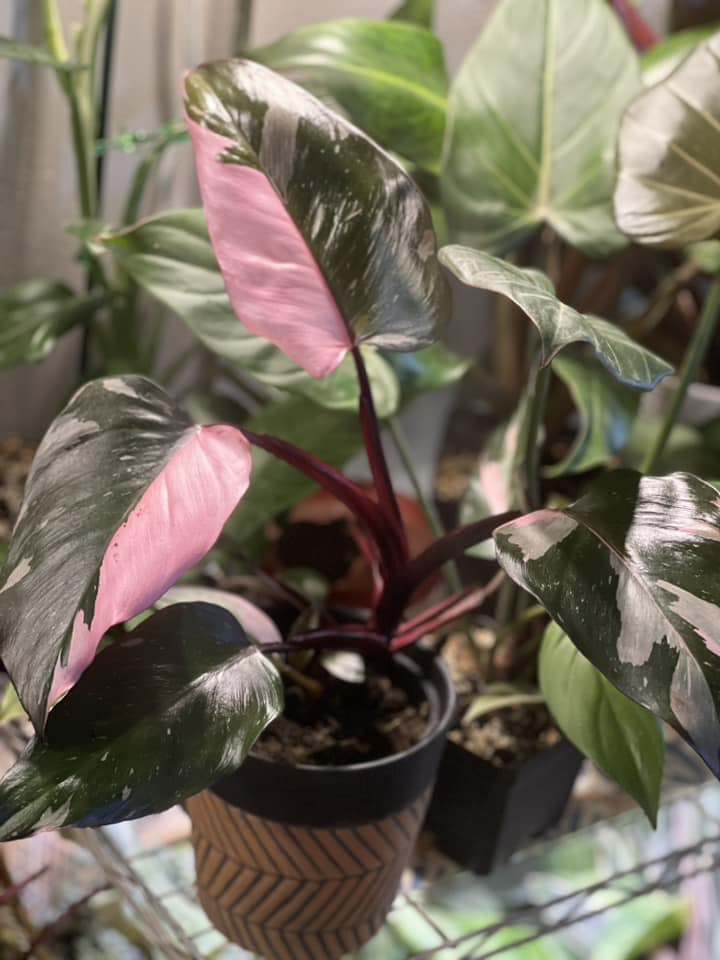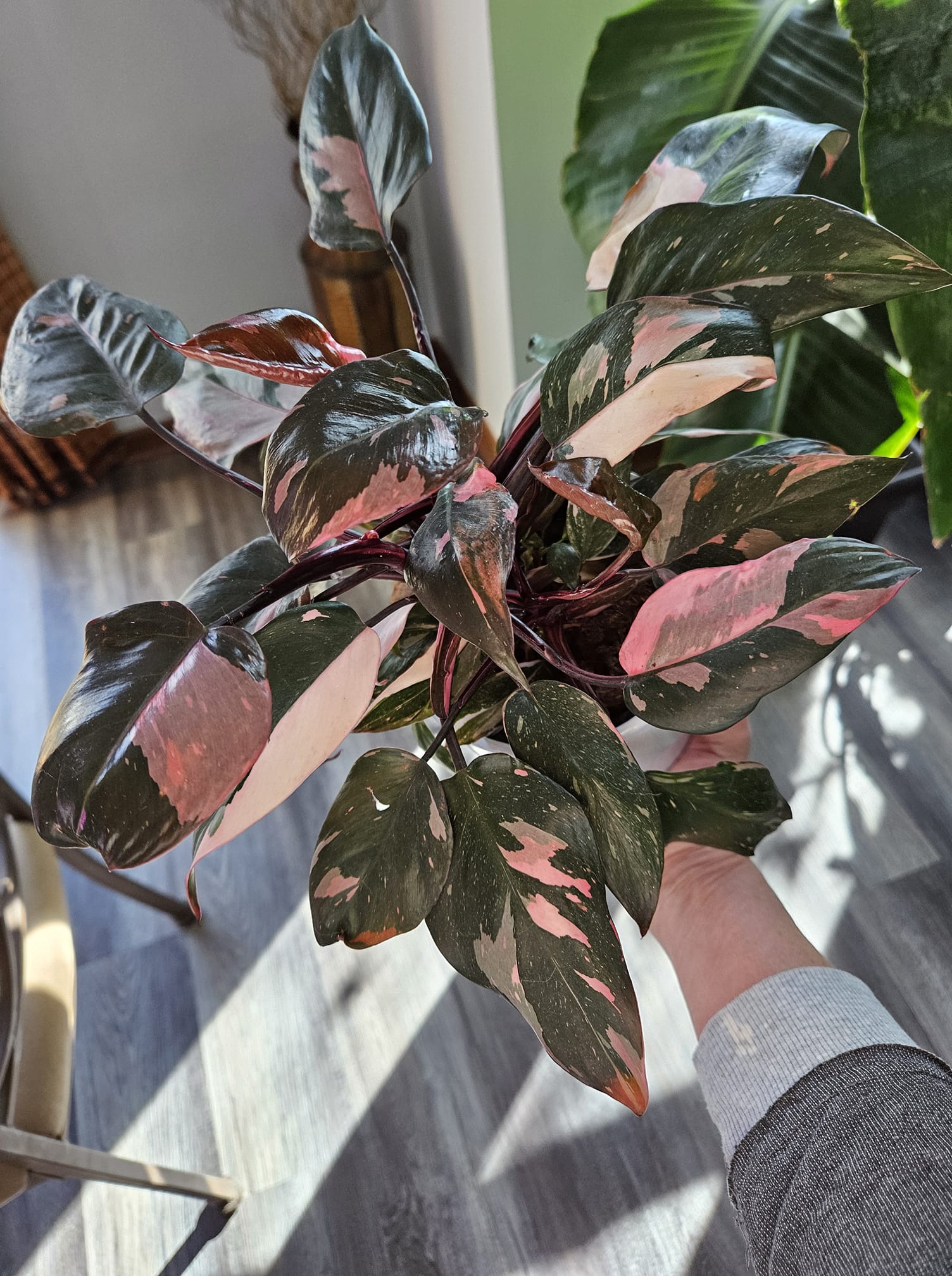
The Pink Princess Philodendron (Philodendron erubescens ‘Pink Princess’) is one of the most sought-after houseplants, admired for its stunning variegated leaves splashed with shades of pink, green, and deep burgundy. This rare and exquisite plant has become a favorite among plant collectors and enthusiasts alike. However, maintaining the vibrant pink hues and ensuring its overall health requires specific care techniques.
If you’ve recently acquired a Pink Princess Philodendron or are planning to get one, this guide will walk you through everything you need to know—from proper lighting and watering to propagation and troubleshooting common problems. Follow these care tips to keep your Pink Princess thriving and looking its best!
I’ve provided detailed information in the article below to help with your concerns, However, if you still have questions or need more help, feel free to share photos of your plants or describe your issue on our Facebook Group. Just join the group and leave a comment on the most recent post — either I or someone from the community will respond as soon as possible. We also share helpful and unique plant care tips daily, so consider joining the group to stay updated!
How to Care for a Pink Princess Philodendron

1. Light Requirements: Finding the Perfect Balance
One of the most important factors in maintaining the pink variegation of your Pink Princess Philodendron is proper lighting. But how much light is too much, and how much is too little?
- Bright, indirect light is ideal. Too much direct sunlight can scorch the leaves, causing brown patches, while insufficient light may result in more green growth and less pink.
- Near an east- or west-facing window is a great spot, but use sheer curtains to filter intense sunlight and prevent leaf burn.
- Grow lights can be used if natural light is insufficient. A full-spectrum LED grow light can help maintain vibrant colors, especially in winter months when daylight hours are shorter.
- Avoid low-light conditions, as this will lead to excessive green foliage and a loss of the unique pink variegation that makes this plant so special.
2. Watering: Avoiding Overwatering and Underwatering
Like most Philodendrons, the Pink Princess enjoys slightly moist soil but doesn’t tolerate being waterlogged. The key to proper watering is consistency and observation.
- Water when the top 1-2 inches of soil feel dry. This prevents overwatering, which can lead to root rot, and underwatering, which may cause drooping and leaf curling.
- Use the soak and dry method—water thoroughly until excess water drains out of the bottom of the pot. Empty the saucer to avoid stagnant water.
- Avoid letting it sit in standing water to prevent root rot and fungal infections.
- Reduce watering in the winter months when the plant’s growth slows down, and the soil takes longer to dry out.
- If using tap water, let it sit for 24 hours before watering to allow chlorine to dissipate, as high chlorine levels can negatively affect plant health.
3. Humidity and Temperature: Creating a Tropical Environment
The Pink Princess originates from the tropical rainforests of South America, so replicating its natural environment will keep it happy.
- Humidity levels: 50-60% or higher is ideal for promoting healthy growth and preventing dry leaf edges.
- Ways to increase humidity:
- Use a humidifier in the room where your plant is kept.
- Place a tray of water with pebbles near the plant to allow evaporation to increase moisture in the air.
- Group it with other plants to create a natural humid environment through transpiration.
- Occasionally mist the plant, but avoid excessive misting, as wet leaves can invite fungal issues.
- Temperature range: 65-80°F (18-27°C). Avoid cold drafts from air conditioners, heaters, and open windows during colder months, as sudden temperature drops can stress the plant and cause leaf damage.
4. Soil and Potting: Choosing the Right Mix
A well-draining, nutrient-rich soil mix is key for a thriving Pink Princess. Proper soil aeration prevents root rot and allows for optimal nutrient absorption.
- Use a chunky, airy mix with:
- Peat-based potting mix for moisture retention.
- Perlite or pumice for aeration, ensuring the roots have access to oxygen.
- Orchid bark for added drainage and root support.
- A small amount of activated charcoal to prevent mold and bacteria buildup.
- Ensure your pot has drainage holes to prevent soggy soil. A pot without drainage can trap excess water, leading to fungal infections and root suffocation.
- Repot every 1-2 years or when the plant becomes root-bound, ensuring fresh soil and continued healthy growth.
5. Fertilizing: Boosting Growth and Pink Variegation
Feeding your plant the right nutrients will enhance its growth and variegation.
- Use a balanced liquid fertilizer (such as 20-20-20) diluted to half strength. A high nitrogen content can promote more green foliage, so look for a balanced mix.
- Feed once a month during the growing season (spring and summer) to support vibrant, healthy foliage.
- Avoid over-fertilizing, as excessive nutrients can cause leaf burn, brown tips, or an overgrowth of green leaves, reducing the signature pink variegation.
- Use an organic fertilizer such as worm castings or compost tea for a natural, slow-release nutrient boost.
6. Pruning and Maintenance: Keeping Your Plant in Shape
Regular pruning encourages healthy growth and helps maintain an ideal shape.
- Trim off any damaged, yellowing, or overly green leaves to encourage better variegation.
- If your plant is getting leggy, cut back long stems to encourage bushier growth and prevent a sparse appearance.
- Always use sterilized pruning shears to prevent infections and spread of bacteria.
- Wipe down leaves with a damp cloth periodically to remove dust and improve photosynthesis.
7. Propagation: How to Grow More Pink Princess Philodendrons
If you want to expand your collection or share this beauty with friends, propagation is a great option.
Stem Cutting Method
- Choose a healthy stem with at least one node and a pink variegated leaf.
- Cut just below the node using clean, sharp scissors.
- Place the cutting in water or moist sphagnum moss.
- Keep it in bright, indirect light and change the water every few days to prevent bacterial growth.
- Once roots develop (after 3-6 weeks), transfer it into a pot with well-draining soil and continue regular care.
8. Common Problems and How to Fix Them
Even with the best care, your Pink Princess may encounter issues. Here’s how to troubleshoot:
- Why are the leaves turning green?
- Your plant may not be getting enough light. Move it to a brighter spot or use a grow light.
- If too many green leaves appear, prune them off to encourage variegation.
- Why are the leaves yellowing?
- Overwatering or underwatering is the most common cause. Adjust your watering routine accordingly.
- Why are the pink sections turning brown?
- This could be sunburn. Ensure your plant is not exposed to direct, harsh sunlight.
- Why is my plant not growing?
- Lack of nutrients, poor lighting, or cold temperatures could be the cause. Adjust care accordingly.
